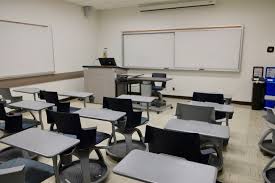The Evolution of the Classroom Environment

The Importance of Classrooms in Modern Education
Classrooms have long been pivotal to the educational experience, serving not just as physical spaces but as the core of learning methodologies. With technology advancing and educational paradigms shifting, the classroom environment is evolving in unprecedented ways. Understanding these changes is critical to optimising student learning and engagement in our increasingly dynamic world.
Current Trends in Classroom Design
Recent studies reveal a significant transformation in classroom layouts and design, with a focus on flexibility and collaborative learning. Traditional rows of desks are being replaced by modular furniture that encourages group work, discussions, and hands-on activities. Innovative concepts like the ‘flipped classroom’ enable students to learn content at home through digital resources and engage in practical application during class hours. This shift promotes active student participation and enhances comprehension.
Technological Integration in Classrooms
Technology plays a crucial role in modern classrooms, enhancing both teaching and learning processes. The incorporation of smart boards, digital projectors, and tablets creates an interactive learning environment that caters to different learning styles. During the Covid-19 pandemic, remote learning became a necessity, leading to increased investment in educational technology. Schools now face the challenge of integrating these technologies sustainably, ensuring that both teachers and students are equipped to leverage digital tools effectively.
The Impact of Mental Health Awareness
In recent years, there has been a growing recognition of the importance of mental health within the educational context. Classrooms are increasingly being seen as spaces not just for academic learning but also for emotional and social development. Schools are adopting practices such as mindfulness, emotional intelligence programs, and enhanced support systems to create a nurturing environment conducive to learning. This shift is essential, given that research consistently shows a strong link between mental health and academic performance.
Conclusion: Future Directions for Classrooms
The evolution of the classroom environment reflects larger societal changes and technological advancements. As educational institutions adapt to these shifts, it is imperative they remain flexible and responsive to the needs of students and educators. Advances in technology, a focus on mental health, and innovative teaching methods are likely to shape classrooms in both the near and distant future. By prioritising these aspects, we can foster not just a place for learning but a community that nurtures growth, innovation, and well-being for all students.









